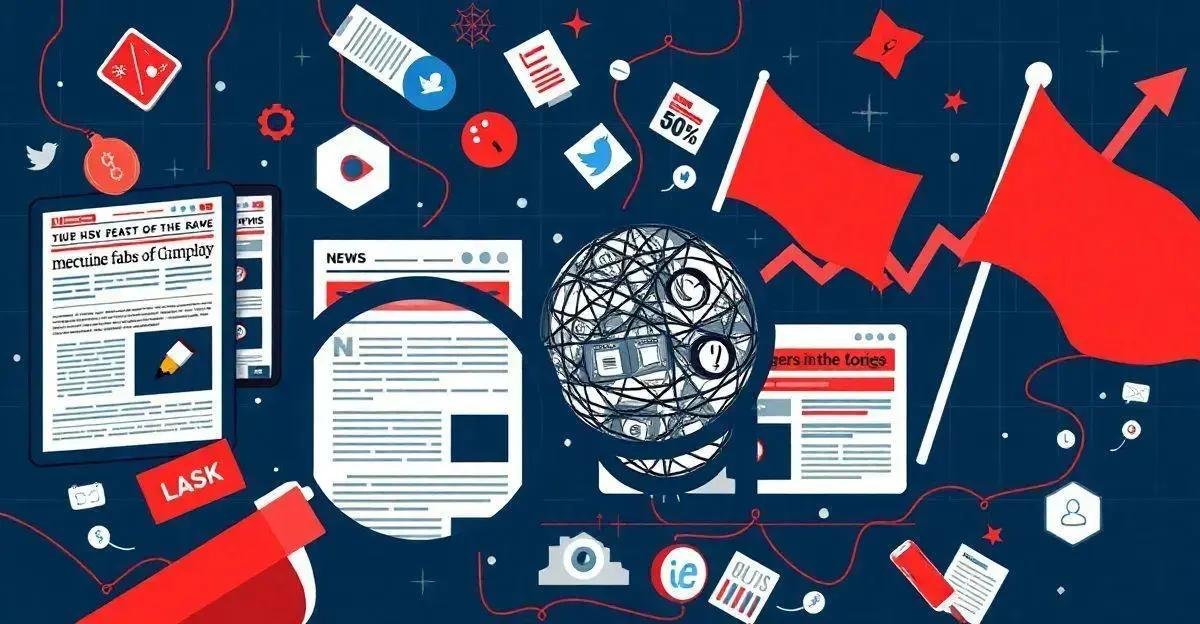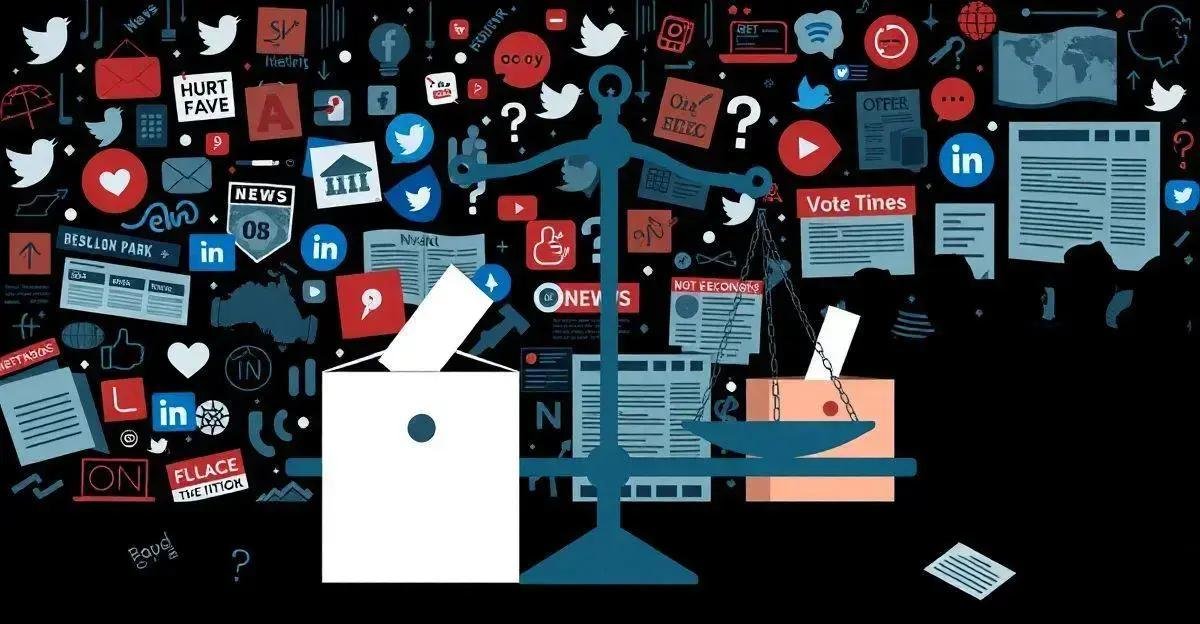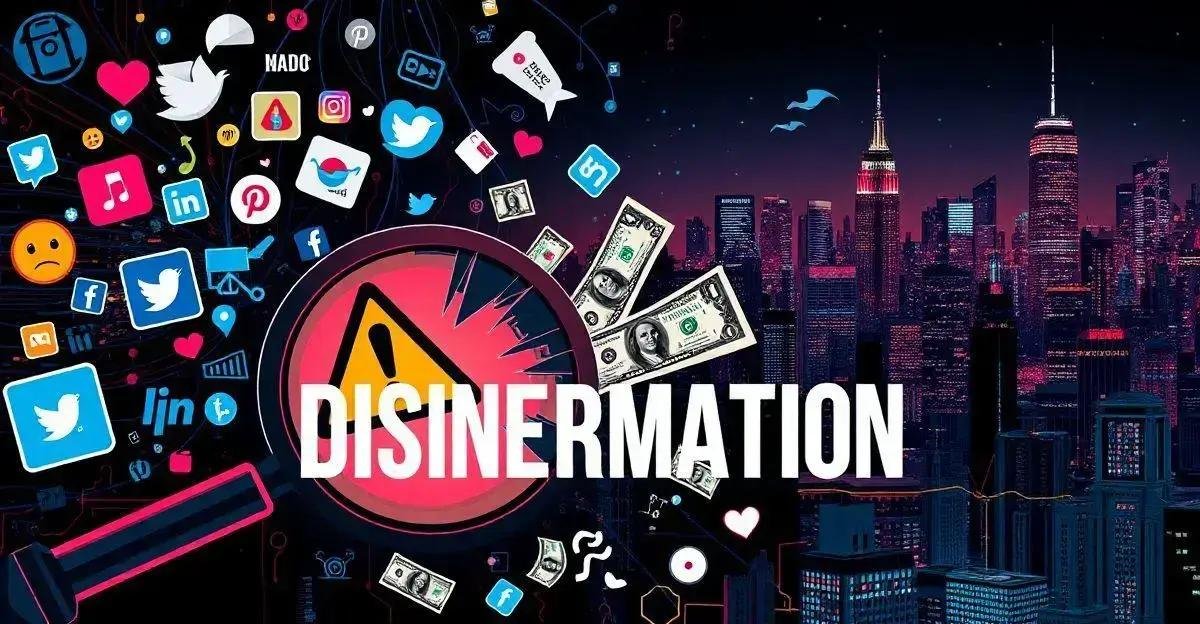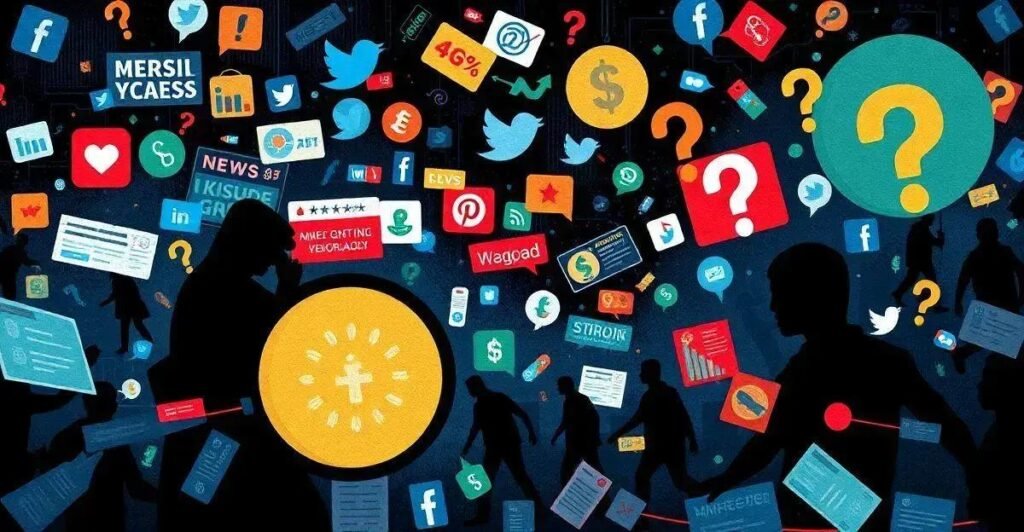Imagine waking up one day to find that everything you thought you knew about the world is a lie.
In today’s digital age, disinformation is a growing concern that can have devastating consequences.
As we navigate the vast expanse of the internet, it’s easy to get caught in a web of deceit and misinformation.
But fear not, dear reader, for today we’re going to delve into the dark world of disinformation and explore the ways in which it’s spreading like wildfire.
Introduction to Disinformation
Disinformation is a form of communication that is intentionally misleading, distorted, or false. It can take many forms, including fake news, propaganda, and misinformation. Disinformation can be spread through various channels, including social media, traditional media, and personal conversations. It can be a powerful tool for manipulating public opinion and influencing political decisions. Understanding the concept of disinformation is crucial in today’s digital age, where the spread of false information can have serious consequences.
Disinformation can spread quickly through social media, traditional media, and personal conversations. It can be spread intentionally by individuals or organizations with a vested interest in manipulating public opinion, or unintentionally by individuals who are unaware of the accuracy of the information they are sharing. Disinformation can also be spread through fake news websites, propaganda campaigns, and disinformation agents. Once disinformation is spread, it can be difficult to correct, as people may become emotionally attached to the information and resistant to change.
There are many types of disinformation, including fake news, propaganda, misinformation, and disinformation campaigns. Fake news is a type of disinformation that is designed to deceive and manipulate. It is often spread through social media and traditional media, and can be difficult to distinguish from real news. Propaganda is a type of disinformation that is used to promote a particular ideology or agenda. Misinformation is a type of disinformation that is based on incorrect or incomplete information. Disinformation campaigns are a type of disinformation that is designed to influence public opinion or political decisions.
The impact of disinformation can be severe, ranging from the erosion of trust in institutions and the manipulation of public opinion to the spread of false information and the promotion of harmful beliefs. Disinformation can also have serious consequences for individuals, including the loss of personal information, the spread of false rumors, and the promotion of harmful beliefs. In addition, disinformation can have serious consequences for society as a whole, including the promotion of harmful beliefs and the erosion of trust in institutions.
Spotting disinformation can be challenging, but there are several steps you can take to avoid falling victim to it. First, verify the accuracy of the information you are given. Check the credibility of the source, and look for multiple sources to confirm the information. Be cautious of sensational headlines and emotive language, as these can be indicative of disinformation. Also, be wary of information that is overly simplistic or that uses technical jargon you don’t understand. Finally, be skeptical of information that is presented as fact without evidence.
The future of disinformation is uncertain, but one thing is clear: it will continue to be a major threat to our society. As technology advances, disinformation will likely become even more sophisticated and widespread. To combat disinformation, we must be vigilant and proactive, using technology and other tools to detect and correct it. We must also work to promote media literacy and critical thinking, teaching people how to evaluate information and spot disinformation. Finally, we must hold those who spread disinformation accountable, using legal and ethical means to prevent them from causing harm.
The Spread of Disinformation

The Spread of Disinformation
Disinformation can spread rapidly through various channels, including social media, traditional media, and personal conversations. Social media platforms, in particular, have become breeding grounds for disinformation, as they allow users to share information quickly and widely. Traditional media outlets, such as newspapers and television stations, can also spread disinformation through biased reporting or the promotion of unverified information. Additionally, personal conversations and word-of-mouth can spread disinformation, as people often share information without verifying its accuracy. The spread of disinformation can have serious consequences, including the manipulation of public opinion and the promotion of harmful beliefs.
Types of Disinformation
Disinformation can take many forms, including fake news, propaganda, misinformation, and disinformation campaigns. Fake news refers to fabricated information presented as factual, while propaganda is information designed to promote a particular ideology or agenda. Misinformation is incorrect or incomplete information that is spread unintentionally, often through lack of knowledge or understanding. Disinformation campaigns are deliberate attempts to manipulate public opinion or political decisions through the spread of false information. Each type of disinformation has its own unique characteristics and consequences, and understanding these differences is crucial for detecting and countering disinformation.
The Impact of Disinformation
The impact of disinformation can be far-reaching and devastating, affecting individuals, communities, and society as a whole. At the individual level, disinformation can lead to confusion, anxiety, and mistrust, as people struggle to distinguish fact from fiction. At the community level, disinformation can exacerbate social and political tensions, leading to conflict and division. At the societal level, disinformation can undermine trust in institutions and the media, leading to a breakdown in social cohesion and democratic governance. The consequences of disinformation are severe and long-lasting, making it essential to detect and counter this threat.
How to Spot Disinformation
Spotting disinformation requires a combination of critical thinking, media literacy, and fact-checking skills. The first step is to verify the accuracy of the information you are given, checking the credibility of the source and looking for multiple sources to confirm the information. Be wary of sensational headlines and emotive language, as these can be indicative of disinformation. Also, be suspicious of information that is presented as fact without evidence or that is overly simplistic or technical. Finally, be willing to question information and seek out multiple perspectives before accepting it as true.
The Future of Disinformation
The future of disinformation is uncertain, but one thing is clear: it will continue to be a major threat to our society. As technology advances, disinformation will likely become even more sophisticated and widespread. To combat this threat, we must be vigilant and proactive, using technology and other tools to detect and correct disinformation. We must also work to promote media literacy and critical thinking, teaching people how to evaluate information and spot disinformation. Finally, we must hold those who spread disinformation accountable, using legal and ethical means to prevent them from causing harm.
Types of Disinformation
Disinformation can take many forms, including fake news, propaganda, misinformation, and disinformation campaigns. Fake news refers to fabricated information presented as factual, while propaganda is information designed to promote a particular ideology or agenda. Misinformation is incorrect or incomplete information that is spread unintentionally, often through lack of knowledge or understanding. Disinformation campaigns are deliberate attempts to manipulate public opinion or political decisions through the spread of false information. Other types of disinformation include deep fakes, which are manipulated videos or audio recordings designed to deceive, and microtargeting, which involves using personal data to target individuals with false information. Understanding these different types of disinformation is crucial for detecting and countering disinformation.
Disinformation can spread rapidly through various channels, including social media, traditional media, and personal conversations. Social media platforms, in particular, have become breeding grounds for disinformation, as they allow users to share information quickly and widely. Traditional media outlets, such as newspapers and television stations, can also spread disinformation through biased reporting or the promotion of unverified information. Additionally, personal conversations and word-of-mouth can spread disinformation, as people often share information without verifying its accuracy. Disinformation can also spread through email, messaging apps, and other forms of online communication.
The impact of disinformation can be far-reaching and devastating, affecting individuals, communities, and society as a whole. At the individual level, disinformation can lead to confusion, anxiety, and mistrust, as people struggle to distinguish fact from fiction. At the community level, disinformation can exacerbate social and political tensions, leading to conflict and division. At the societal level, disinformation can undermine trust in institutions and the media, leading to a breakdown in social cohesion and democratic governance. The consequences of disinformation are severe and long-lasting, making it essential to detect and counter this threat.
Spotting disinformation requires a combination of critical thinking, media literacy, and fact-checking skills. The first step is to verify the accuracy of the information you are given, checking the credibility of the source and looking for multiple sources to confirm the information. Be wary of sensational headlines and emotive language, as these can be indicative of disinformation. Also, be suspicious of information that is presented as fact without evidence or that is overly simplistic or technical. Finally, be willing to question information and seek out multiple perspectives before accepting it as true.
The future of disinformation is uncertain, but one thing is clear: it will continue to be a major threat to our society. As technology advances, disinformation will likely become even more sophisticated and widespread. To combat this threat, we must be vigilant and proactive, using technology and other tools to detect and correct disinformation. We must also work to promote media literacy and critical thinking, teaching people how to evaluate information and spot disinformation. Finally, we must hold those who spread disinformation accountable, using legal and ethical means to prevent them from causing harm.
The Impact of Disinformation

The impact of disinformation on individuals, communities, and society as a whole can be significant and far-reaching.
At the individual level, disinformation can lead to confusion, anxiety, and mistrust, as people struggle to distinguish fact from fiction.
At the community level, disinformation can exacerbate social and political tensions, leading to conflict and division.
At the societal level, disinformation can undermine trust in institutions and the media, leading to a breakdown in social cohesion and democratic governance.
The consequences of disinformation are severe and long-lasting, making it essential to detect and counter this threat.
How to Spot Disinformation
Spotting disinformation requires a combination of critical thinking, media literacy, and fact-checking skills. First, verify the accuracy of the information you are given by checking the credibility of the source and looking for multiple sources to confirm the information.
Be wary of sensational headlines and emotive language, as these can be indicative of disinformation. Also, be suspicious of information that is presented as fact without evidence or that is overly simplistic or technical.
Finally, be willing to question information and seek out multiple perspectives before accepting it as true.
The Future of Disinformation

The future of disinformation is uncertain, but one thing is clear: it will continue to be a major threat to our society. As technology advances, disinformation will likely become even more sophisticated and widespread.
To combat this threat, we must be vigilant and proactive, using technology and other tools to detect and correct disinformation. We must also work to promote media literacy and critical thinking, teaching people how to evaluate information and spot disinformation.
Finally, we must hold those who spread disinformation accountable, using legal and ethical means to prevent them from causing harm.
Frequently Asked Questions about Disinformation
What is disinformation and how can I spot it?
Disinformation is a deliberate attempt to manipulate public opinion or political decisions through the spread of false information. To spot disinformation, you can verify the accuracy of the information you are given by checking the credibility of the source and looking for multiple sources to confirm the information.
How can disinformation impact society?
Disinformation can have severe and long-lasting consequences on individuals, communities, and society as a whole. It can lead to confusion, anxiety, and mistrust, exacerbate social and political tensions, and undermine trust in institutions and the media.
What are some common types of disinformation?
There are many types of disinformation, including fake news, propaganda, misinformation, and disinformation campaigns. Other types of disinformation include deep fakes, which are manipulated videos or audio recordings designed to deceive, and microtargeting, which involves using personal data to target individuals with false information.
How can I prevent disinformation from spreading?
To prevent disinformation from spreading, you can promote media literacy and critical thinking, teach people how to evaluate information and spot disinformation, and hold those who spread disinformation accountable, using legal and ethical means to prevent them from causing harm.
What is the future of disinformation?
The future of disinformation is uncertain, but one thing is clear: it will continue to be a major threat to our society. As technology advances, disinformation will likely become even more sophisticated and widespread. To combat this threat, we must be vigilant and proactive, using technology and other tools to detect and correct disinformation.



